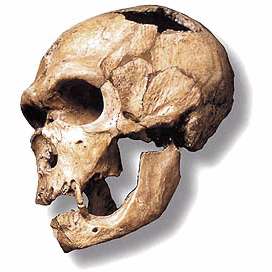
In my previous blog, I discussed TAXONOMY, an organizational method to sort things. Phylogeny is different from taxonomy in that it categorizes how closely related different species are to each other by using the taxonomic method.

Think of the phylogenetic tree as an actual tree. You have the roots which are the furthest back in time and you have the branches which are more recent. The "root" of the tree represents the ancestral lineage, and the tips of the branches represent the descendants of that ancestor. As you move from the root to the tips, you are moving forward in time. When a lineage splits in the tree, it's because of the traits that distinguish one group from another.
Monophyletic Groups

Without going into detail on the species names, you can follow the "tree" of bear species from left to right. The older species are on the left and more recently developed are on the right. The split between species is referred to as divergent evolution. Pandas are related to polar bears, but they're farther away from each other than a panda and a black bear.
When all of the species are grouped together and have the same common ancestor, you can call the group a clade. When there's a group separated from other groups, like a high school clique, you call it a monophyletic group.
Paraphyletic and Polyphyletic Groups
When you look at the picture of the different phylogenies, you see the monophyly (short cut word for monophyletic group). You also see the paraphyletic group which is a group of animals that contains a common ancestor and some of the descendants, but not all of them. The polyphyletic group includes a group of organisms whose last common ancestor is not a member of the group.
Homology
Homologous features are traits that animals have in common with each other due to a common ancestor. A great example is the arm bones. horses, dogs, frogs, fish, birds, bats etc. have wrist bones, finger bones, femurs, hips, etc. Those features are homologous because they are all from a common ancestor that also had those features.
Analogy
Analogous features are traits that have a similar function, but outside of evolutionary origin. Butterfly wings, bat wings, and birdwings are a great example of this. Analogous traits are a part of convergent evolution where independent evolution of similar features in species develop in different moments in time.
When you observe the phylogenetic tree, remember that you're looking at the relatedness between organisms based on genetics. The base of the tree always starts with the most ancestral or oldest organism and ends with the descendants or most recent organisms.
Sources:
Biology: Concepts & Connections 9th Edition by Campbell 2017
Evolution (2nd ed.), 2016 by Carl T. Bergstrom and Lee Alan Dugatkin
Theories of Human Evolution: A century Debate, 1844-1944 by Peter J. Bowler
Lecture Notes: Dr. Kurtis Dean and Dr. James Loch, Evolution, Fall 2018
Lecture Notes: Dr. Stephen Wilson, General Ecology, Spring 2015
Lectures Notes: Dr. Hannah Marsh, Human Prehistory, Fall 2014; Human Variation, Spring 2016; Human Evolution, Fall 2016
"Everything Worth Knowing About Scientific Dating Methods" Discovery Magazine








Comments